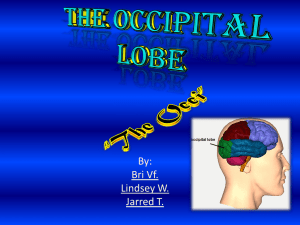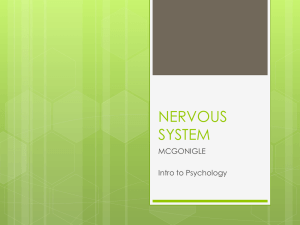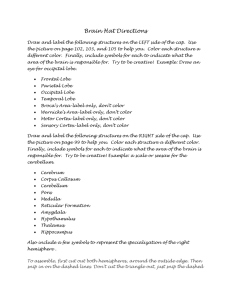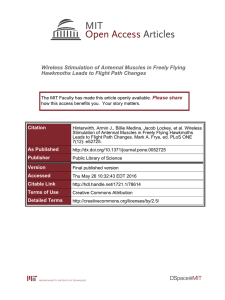Asymmetrical neural coding observed in the bee brain Trento – An
advertisement
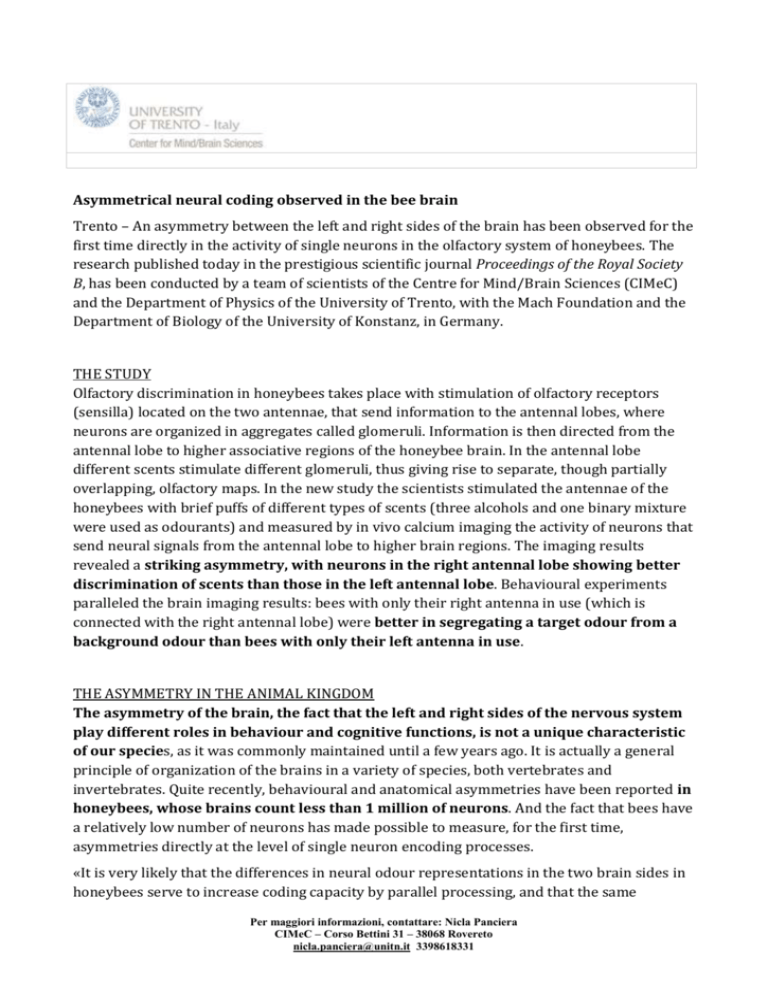
Asymmetrical neural coding observed in the bee brain Trento – An asymmetry between the left and right sides of the brain has been observed for the first time directly in the activity of single neurons in the olfactory system of honeybees. The research published today in the prestigious scientific journal Proceedings of the Royal Society B, has been conducted by a team of scientists of the Centre for Mind/Brain Sciences (CIMeC) and the Department of Physics of the University of Trento, with the Mach Foundation and the Department of Biology of the University of Konstanz, in Germany. THE STUDY Olfactory discrimination in honeybees takes place with stimulation of olfactory receptors (sensilla) located on the two antennae, that send information to the antennal lobes, where neurons are organized in aggregates called glomeruli. Information is then directed from the antennal lobe to higher associative regions of the honeybee brain. In the antennal lobe different scents stimulate different glomeruli, thus giving rise to separate, though partially overlapping, olfactory maps. In the new study the scientists stimulated the antennae of the honeybees with brief puffs of different types of scents (three alcohols and one binary mixture were used as odourants) and measured by in vivo calcium imaging the activity of neurons that send neural signals from the antennal lobe to higher brain regions. The imaging results revealed a striking asymmetry, with neurons in the right antennal lobe showing better discrimination of scents than those in the left antennal lobe. Behavioural experiments paralleled the brain imaging results: bees with only their right antenna in use (which is connected with the right antennal lobe) were better in segregating a target odour from a background odour than bees with only their left antenna in use. THE ASYMMETRY IN THE ANIMAL KINGDOM The asymmetry of the brain, the fact that the left and right sides of the nervous system play different roles in behaviour and cognitive functions, is not a unique characteristic of our species, as it was commonly maintained until a few years ago. It is actually a general principle of organization of the brains in a variety of species, both vertebrates and invertebrates. Quite recently, behavioural and anatomical asymmetries have been reported in honeybees, whose brains count less than 1 million of neurons. And the fact that bees have a relatively low number of neurons has made possible to measure, for the first time, asymmetries directly at the level of single neuron encoding processes. «It is very likely that the differences in neural odour representations in the two brain sides in honeybees serve to increase coding capacity by parallel processing, and that the same Per maggiori informazioni, contattare: Nicla Panciera CIMeC – Corso Bettini 31 – 38068 Rovereto nicla.panciera@unitn.it 3398618331 principle of organization holds true in all organisms.» says Elisa Rigosi, first author of the paper, who was awarded her Ph.D. at the Centre for Mind/Brain Sciences (CIMeC) of the University of Trento. Relatively simple animal models such as those provided by the brains of insects may provide important insights to neurosciences. As commented by Albrecht Haase of CIMeC and Physics Dept.: «The type of collaboration between different disciplines in neurosciences that we started here in Trento is addressing basic research issues, such as neural plasticity, as well as applied science problems, as the role of certain pesticides (neonicotinoids) in disorders of memory and cognitive function that can explain the worldwide bee colony collapse disorder or the role of genetic variations associated with olfactory sensitivity in certain fly specie (Drosophila suzuki) that are pests of small fruit trees even in this region of North Italy». THE RELEVANCE FOR HUMAN STUDIES. In our species the fact that the left and the right hemisphere have different functions is well documented. The most striking example is handedness, the preferential use of the right hand, which is associated with the use of the contralateral left hemisphere – the hemisphere which is also in charge of language production. Lesions restricted to the right or left hemisphere typically produce in right-handers disturbances of, respectively, spatial-perceptual or linguistic functions. «And it is well known – as noted by CIMeC Director and co-author of the study, Giorgio Vallortigara – that in our species a lack of development or the imperfect development of brain asymmetry is associated with a variety of neurological and neuropsychiatric disorders and diseases, such as dyslexia and schizophrenia». Thus, a deeper understanding of how in the nervous system brain asymmetry is hardwired at the cellular level is crucial both for basic understanding of brain functions and possible clinical implications. The scientists are now continuing their study looking at the highest level stations of the honeybee brain, the so-called mushroom bodies, where the most sophisticated memory and associative capabilities of honeybees seem to reside. Asymmetric neural coding revealed by in vivo calcium imaging in the honey bee brain Elisa Rigosi, Albrecht Haase, Lisa Rath, Gianfranco Anfora, Giorgio Vallortigara, Paul Szyszka DOI: 10.1098/rspb.2014.2571 Published 11 February 2015 http://rspb.royalsocietypublishing.org/content/282/1803/20142571 Per maggiori informazioni, contattare: Nicla Panciera CIMeC – Corso Bettini 31 – 38068 Rovereto nicla.panciera@unitn.it 3398618331


